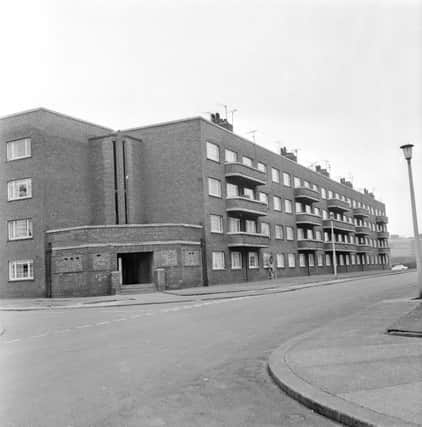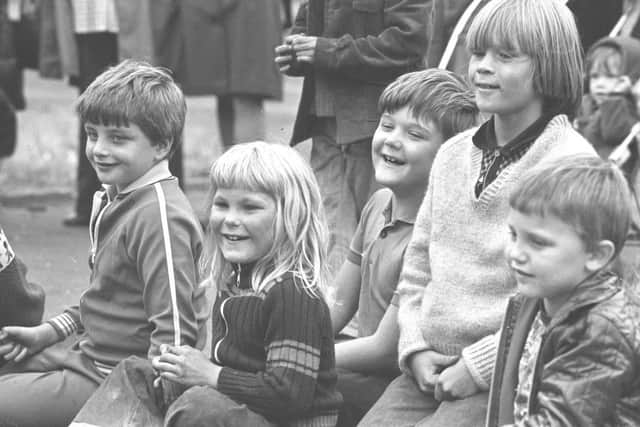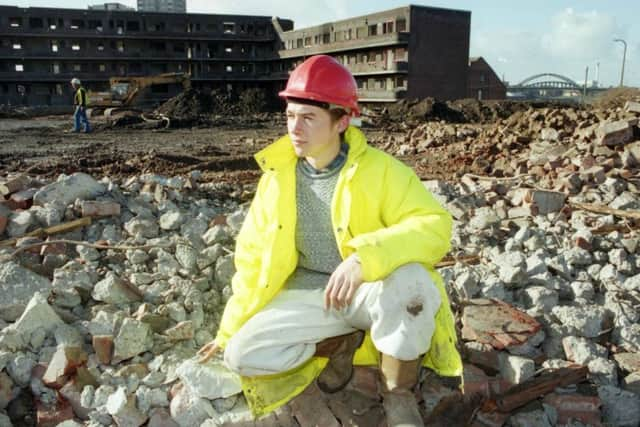The end of a Sunderland housing area – but not the community spirit


Back in 1997, a revamp which totalled almost £20million was being implemented which involved lots of new homes in a rolling programme.
And when the Sunderland Echo came to report on the development, there was one aspect of it all which struck our reporter.


Advertisement
Hide AdAdvertisement
Hide Ad“At its heart is the families born and bred in the area,” said the story at the time.
“Talk about a close-knit community and you talk about the East End,” said the Echo story.
Many of the area’s tenants were related and some of the families living in the area had four generations of their clan in the neighbourhood.
Wear Garth and Walton Garth were coming down but that was only one part of a rolling programme of demolition.


Advertisement
Hide AdAdvertisement
Hide AdAgeing flats were on the way out and new homes were coming in.
Last in line to come down were Burleigh Garth and Covent Garden although the future of those sites had not been decided at the time.
However, what had been decided was that the project was creating local work for local people.
There was a partnership between Home Housing, East Training Education and Community, and developers Gleeson which was collectively finding people work.
Advertisement
Hide AdAdvertisement
Hide AdIt won a Government National Training Award and made the top five in another.
It was so successful that 39 local people got work on the scheme and 35 of them got either Level 1 or Level 2 NVQs in a building trade.
Former residents of the Garths were among those to benefit.
Our report at the time reflected on the era when the Garths first were unveiled ‘to a backdrop of people hanging from balconies waving flags and dressed in carnival outfits.
“Families had moved in from slum areas to what was, at the time, the old town’s showpiece homes.
Advertisement
Hide AdAdvertisement
Hide Ad“Now another kind of showpieces homes are taking place on the same sites.”
By the time the project was completed, there would be 240 new homes and 26 refurbished flats. At the time, the complete transformation of the site was described as ‘the largest regeneration programme in Britain by a housing association on its own stock.”
The whole project to transform the Garths first began in August 1993 when redevelopment plans were announced. In September that year, work began on the first of the properties in Trinity Square and by the following June, Spring Garden Close was under the attention of developers.
Demolition work began on St Patrick’s Garth in June 1995, and in May 1996, news homes were being completed on the former St Patrick’s Garth site which became known as St John’s and Donnison Gardens.
Advertisement
Hide AdAdvertisement
Hide AdThe renovation of High and River Garths were completed in June 1996, and by January 1997, demolition work had begun at Wear Garth and Walton Garth.
Experts estimated that the completion date for new homes at Wear Garth would be April 1998.
One person who typified the family connection to the area was Steve Cowie who was helping to pull down Wear Garth, 60 years after his late grandfather had helped to put it up.
This was definitely a time of change for the Sunderland area.
Advertisement
Hide AdAdvertisement
Hide AdSunderland Football Club’s Roker Park ground was sold for more than £1million and the fact that it went to a building giants meant fans could live on the site where their heroes had played for almost 100 years.
And on the very same day as the Roker Park news, there was the announcement that the green light had been given to Sunderland’s Metro link.
Experts predicted that if everything went to plan, it could be early 2001 before it was operational at a cost of around £76million.
Construction was expected to start in 1999.
The Echo report at the time said the scheme involved upgrading 14 kilometres of track between Pelaw and Sunderland, and new stations at Fellgate, Roker and Monkwearmouth.
Advertisement
Hide AdAdvertisement
Hide AdAt Sunderland, the route would run for a further five kilometres ending at South Hylton. And five new Metro stations would be built at the Civic Centre, University, Millfield, Pallion and South Hylton.
Share your memories of 1990s news by emailing [email protected]